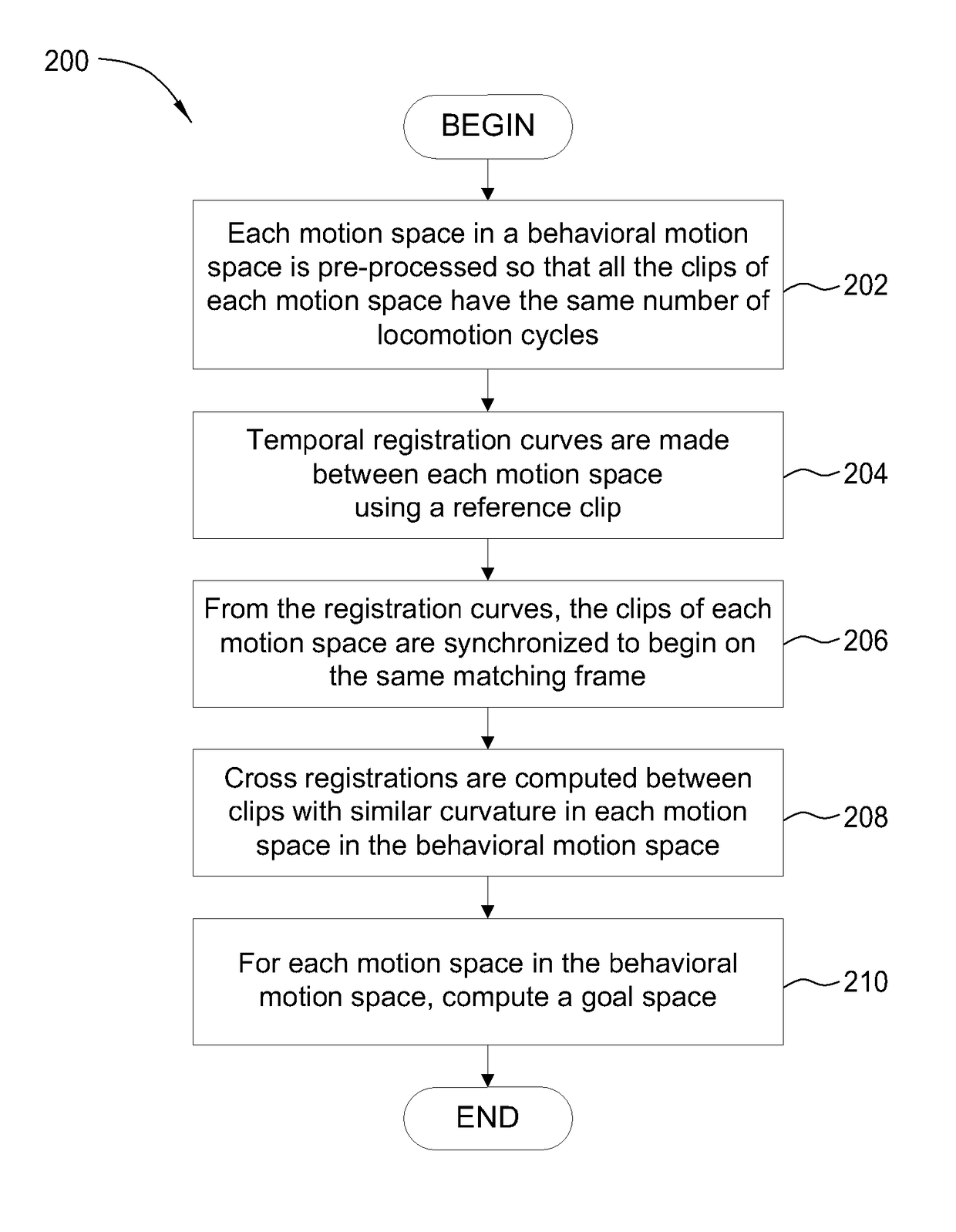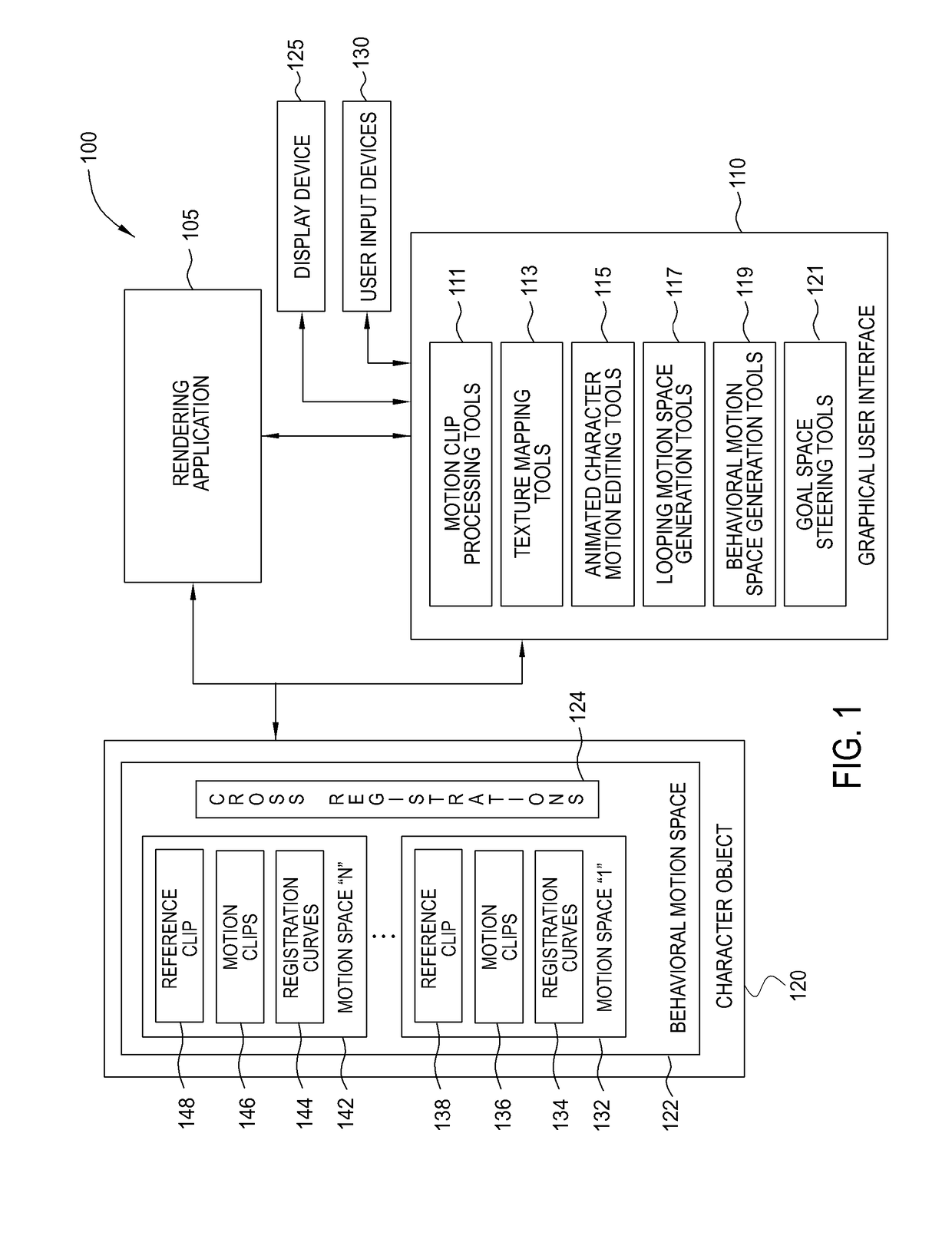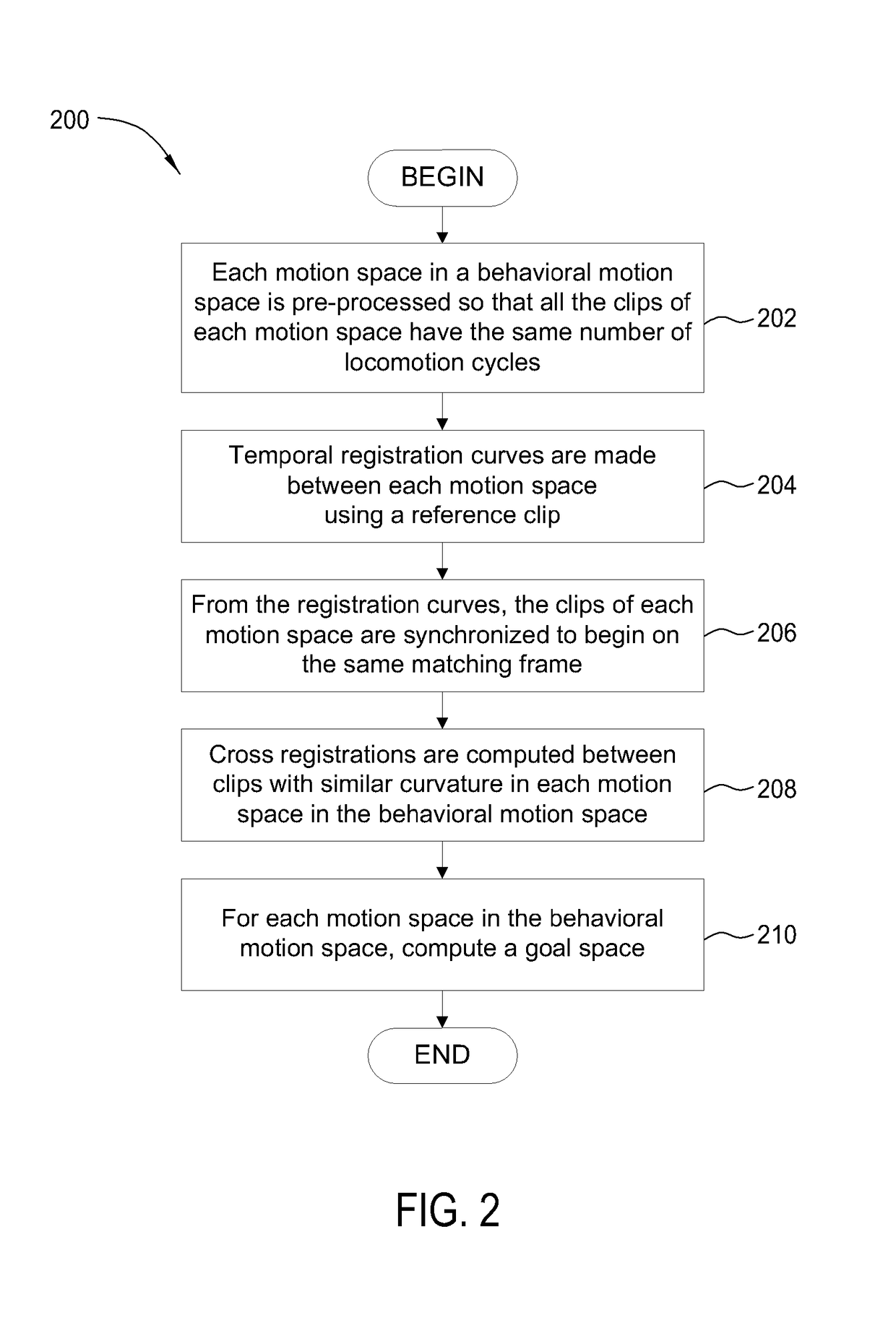Behavioral motion space blending for goal-oriented character animation
a technology of motion space and character animation, applied in the field of computer software, can solve problems such as difficult to achieve realistic appearance, implausible motion is particularly apparent, and the appearance of sliding, jumping, skipping, etc., and achieve the effect of high realisticity
- Summary
- Abstract
- Description
- Claims
- Application Information
AI Technical Summary
Benefits of technology
Problems solved by technology
Method used
Image
Examples
Embodiment Construction
[0025]Embodiments of the invention provide a behavioral motion space which may be used by a rendering application to generate an animation sequence. Generally, the animation sequence may depict a character object rendered to move towards a goal. The goal can be either stationary or moving, and the character object may be rendered to move towards the goal using some form of periodic locomotion. For example, the behavioral motion space may be used to render a human character to appear to be walking, running, or jogging, or some blend of those types of motion. In one embodiment, the behavioral motion space may be generated from a set of motion clips, each set representing a distinct form of motion. The set of clips representing one form of motion generally define a single motion space. By blending an animation from a mix of multiple motion spaces, a more diverse range of character motion may be rendered.
[0026]Animation frames may be rendered using the behavioral motion space by specify...
PUM
 Login to View More
Login to View More Abstract
Description
Claims
Application Information
 Login to View More
Login to View More - R&D
- Intellectual Property
- Life Sciences
- Materials
- Tech Scout
- Unparalleled Data Quality
- Higher Quality Content
- 60% Fewer Hallucinations
Browse by: Latest US Patents, China's latest patents, Technical Efficacy Thesaurus, Application Domain, Technology Topic, Popular Technical Reports.
© 2025 PatSnap. All rights reserved.Legal|Privacy policy|Modern Slavery Act Transparency Statement|Sitemap|About US| Contact US: help@patsnap.com



